If pop-ups that mention f.txt.js file are incessantly interrupting web browsing sessions on a Mac, the right response is to get rid of the underlying malware.
Automatic downloads of arbitrary files in a web browser is a clever trick constituting the modus operandi of seasoned malware distributors. Although it isn’t a fully “interaction-less” attack mechanism, it still allows threat actors to skip one step when deploying harmful code. The infection chain kicks off without the would-be victim clicking on a booby-trapped link online. This type of a hoax significantly increases the success rate of crooks’ efforts. Such a shortcut method is exemplified by the ongoing campaign that involves f.txt.js file. The dodgy implications of this item will be described further down – in the meanwhile, let’s scrutinize the inner workings of this intricate distribution hoax. In recent days, numerous Mac and iDevice users have been experiencing pop-ups stating that f.txt.js is being downloaded or prompting to click on a button to start the download. These ads saying “Do you want to download f.txt.js?” appear when would-be victims are on random web pages and keep reoccurring despite attempts to close the dubious recommendation.

F.txt.js may re-infect your Mac multiple times unless you delete all of its fragments, including hidden ones. Therefore, it is recommended to download Combo Cleaner and scan your system for these stubborn files. This way, you may reduce the cleanup time from hours to minutes.
Download Now Learn how Combo Cleaner works. If the utility spots malicious code, you will need to buy a license to get rid of it.This predicament isn’t new. A very similar campaign first broke out in 2014 and periodically resurfaced over the years. The latest comeback appears to be particularly aggressive. The pop-ups have a cross-browser impact as they hit instances of Safari, Google Chrome, and Mozilla Firefox in the exact same way. Perhaps the most disconcerting tweak is that in many scenarios, the f.txt.js file is downloaded automatically. The only user action required to complete the attack workflow is to open the resulting folder and execute the file. The fact that it’s a JS entity is a concern in itself. JavaScript objects are notoriously common in the malware propagation context. Not only are they used to execute drive-by downloads on websites, but they also represent a widespread format of dangerous payloads, including scareware, banking Trojans, and Mac ransomware. Furthermore, malicious JS files are critical elements exploits that surreptitiously parasitize vulnerabilities in target systems.
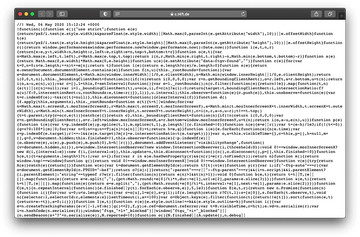
In some cases, the f.txt.js pop-up quandary doesn’t work as intended. When a user runs the downloaded file, their default web browser returns a page chock-full of code strings, as illustrated by the screen capture above. A closer look at these programming artifacts reveals the purposes of this unorthodox cybercrime operation. The application doing the rounds via f.txt.js tracks a victim’s Internet activities and quietly submits the collected details to a Command and Control server. The good news is, the file doesn’t appear to serve other malware behind the user’s back. However, pop-ups are a huge nuisance, plus they are a symptom of virus activity going on inside the Mac already.
The irritating f.txt.js download dialogs are triggered by adware, in the first place. It means that the Mac has been contaminated at an earlier point, and therefore the fix implies thorough inspection of different system layers for traces of the culprit. The core elements of the infection include unwanted LaunchAgents, LaunchDaemons, and a configuration profile that holds sway over the behavior of web browsers. Counterintuitively, the attack doesn’t engage any browser extensions or plugins, which means that narrowing down the repair to simple tweaks of Safari, Chrome, or Firefox settings is a no-go. The f.txt.js pop-ups will persevere until all the bits and pieces of the associated harmful application are purged from the Mac. Below is a comprehensive how-to on eradicating this pest.
Remove “Do you want to download f.txt.js” pop-up virus from iPhone / iPad
As per the anatomy of this hijack, the settings of the web browser that got hit by the f.txt.js virus should be restored to their default values. Additionally, it’s a good idea to block pop-ups and disable JavaScript in Safari. The steps for performing this procedure in Safari and Google Chrome on iOS are as follows:
- Remove f.txt.js pop-ups in Safari on iPhone / iPad
- Go to Settings and select Safari on the menu
- Tap the Clear History and Website Data option
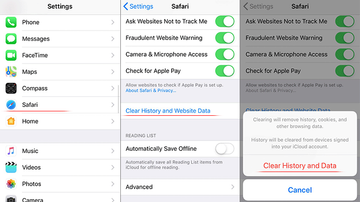
- Confirm by tapping Clear History and Data. Check if the problem with Safari has been fixed. In the event the iPhone / iPad virus popups are still there, proceed to next step.
- When on the Safari Settings screen, tap Advanced. Find the JavaScript entry there and toggle it off. This should solve the problem
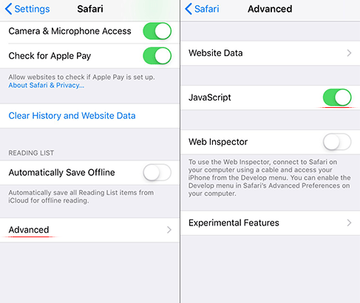
- While in the Safari menu, find the Block Pop-ups feature under the General section and slide its toggle to the left (Off position).
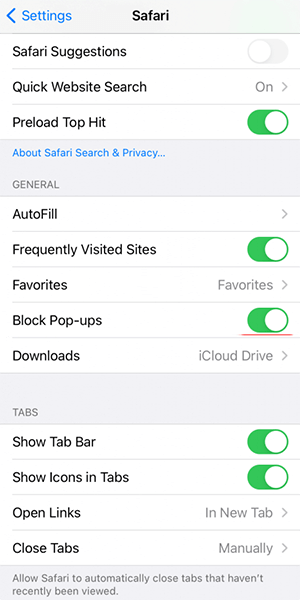
- Head to the Privacy & Security section of the Safari menu and enable the Fraudulent Website Warning feature.
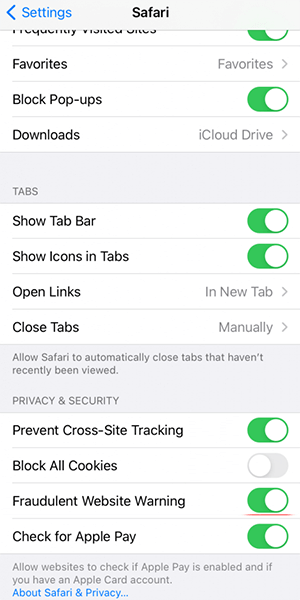
- Remove f.txt.js pop-ups from Google Chrome on iPhone / iPad
- Open Chrome browser, go to Settings and select the Privacy entry. Then, tap Clear Browsing Data
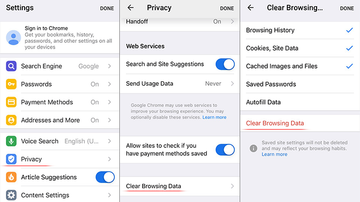
- As the menu expands, make sure the following options are checked: Browsing History; Cookies, Site Data; and Cached Images and Files. Now, tap Clear Browsing Data and confirm before exiting. The popup and redirect activity should now stop in Chrome.
- Open Chrome browser, go to Settings and select the Privacy entry. Then, tap Clear Browsing Data
The current outbreak of the f.txt.js pop-up virus is mostly an iOS and iPadOS issue. However, it is being growingly reported on Mac machines as well, which is a clue that the dodgy code is cross-platform and may be extending its reach. To err on the side of caution, consider also checking your Mac for this evolving infection. The following paragraphs will show you how.
F.txt.js pop-up virus manual removal for Mac
The steps listed below will walk you through the removal of this malicious application. Be sure to follow the instructions in the specified order.
Expand the Go menu in your Mac’s Finder bar and select Utilities as shown below.
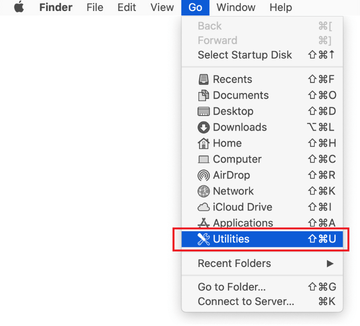
Locate the Activity Monitor icon on the Utilities screen and double-click on it.
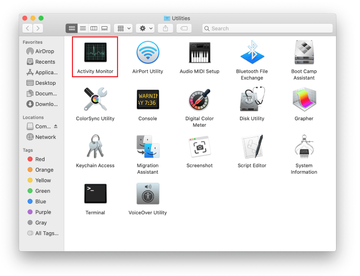
In the Activity Monitor app, look for a process that appears suspicious. To narrow down your search, focus on unfamiliar resource-intensive entries on the list. Keep in mind that its name isn’t necessarily related to the way the threat is manifesting itself, so you’ll need to trust your own judgement. If you pinpoint the culprit, select it and click on the Stop icon in the upper left-hand corner of the screen.
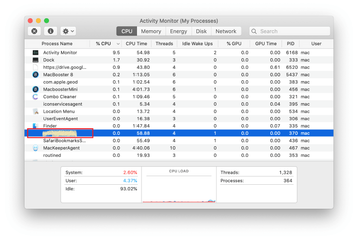
When a follow-up dialog pops up asking if you are sure you want to quit the troublemaking process, select the Force Quit option.
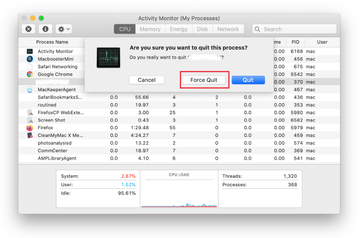
Click on the Go menu icon in the Finder again and select Go to Folder. You can as well use the Command-Shift-G keyboard shortcut.

Type /Library/LaunchAgents in the folder search dialog and click on the Go button.
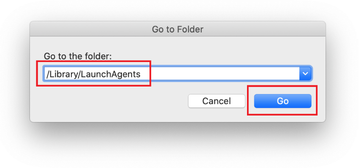
Examine the contents of the LaunchAgents folder for dubious-looking items. Be advised that the names of files spawned by malware may give no clear clues that they are malicious, so you should look for recently added entities that appear to deviate from the norm.
As an illustration, here are several examples of LaunchAgents related to mainstream Mac infections: com.kuklorest.settings.plist, com.pcv.hlpramc.plist, com.updater.mcy.plist, com.avickUpd.plist, and com.msp.agent.plist. If you spot files that don’t belong on the list, go ahead and drag them to the Trash.
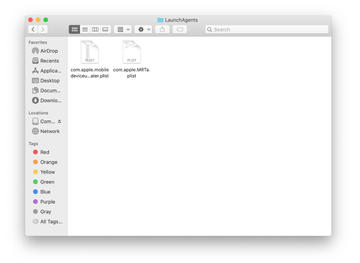
Use the Go to Folder lookup feature again to navigate to the folder named ~/Library/Application Support (note the tilde symbol prepended to the path).
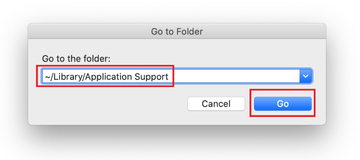
When the Application Support directory is opened, identify recently generated suspicious folders in it and send them to the Trash. A quick tip is to look for items whose names have nothing to do with Apple products or apps you knowingly installed. A few examples of known-malicious folder names are Kuklorest, IdeaShared, and ProgressMatch.
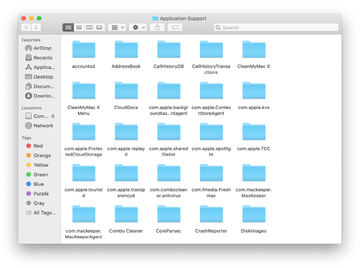
Enter ~/Library/LaunchAgents string (don’t forget to include the tilde character) in the Go to Folder search area.
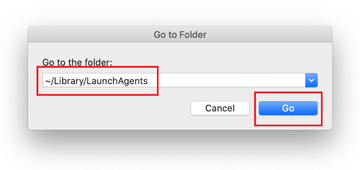
The system will display LaunchAgents residing in the current user’s Home directory. Look for dodgy items related to f.txt.js virus (see logic highlighted in subsections above) and drag the suspects to the Trash.
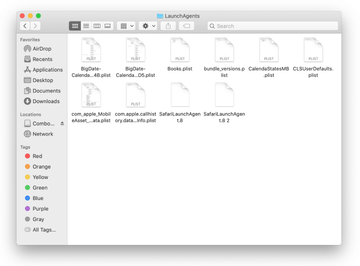
Type /Library/LaunchDaemons in the Go to Folder search field.
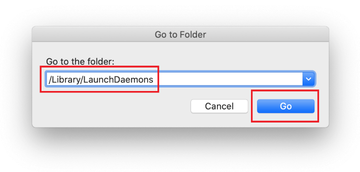
In the LaunchDaemons path, try to pinpoint the files the malware is using for persistence. Several examples of such items cropped by Mac infections are com.pplauncher.plist, com.startup.plist, and com.ExpertModuleSearchDaemon.plist. Delete the sketchy files immediately.
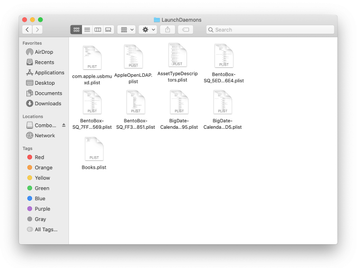
Click on the Go menu icon in your Mac’s Finder and select Applications on the list.

Find the app that clearly doesn’t belong there and move it to the Trash. If this action requires your admin password for confirmation, go ahead and enter it.
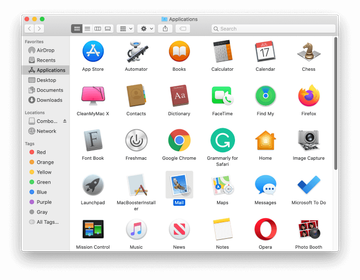
Expand the Apple menu and select System Preferences.
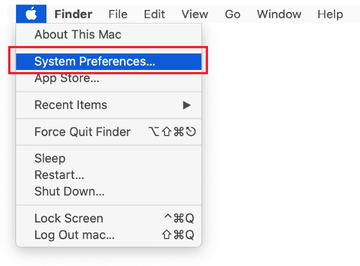
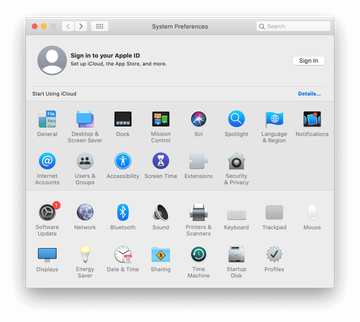
Proceed to Users & Groups and click on the Login Items tab.
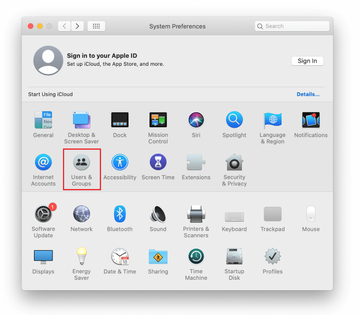
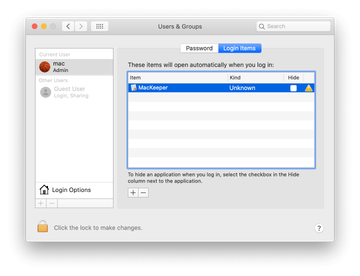
Now select Profiles under System Preferences. Look for a malicious item in the left-hand sidebar. Several examples of configuration profiles created by Mac adware include TechSignalSearch, MainSearchPlatform, AdminPrefs, and Chrome Settings. Select the offending entity and click on the minus sign at the bottom to eliminate it.
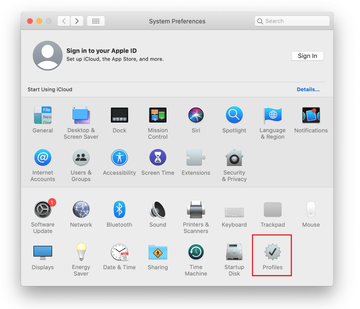
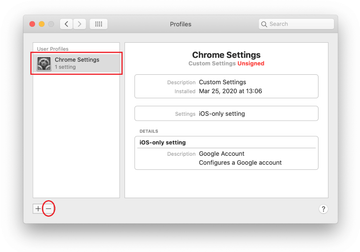
Get rid of f.txt.js virus in web browser on Mac
To begin with, the web browser settings taken over by the f.txt.js virus should be restored to their default values. Although this will clear most of your customizations, web surfing history, and all temporary data stored by websites, the malicious interference should be terminated likewise. The overview of the steps for completing this procedure is as follows:
- Remove f.txt.js virus from Safari
Open the browser and go to Safari menu. Select Preferences in the drop-down list.
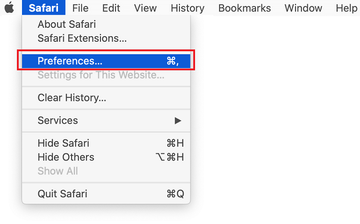
Once the Preferences screen appears, click on the Advanced tab and enable the option saying “Show Develop menu in menu bar”.
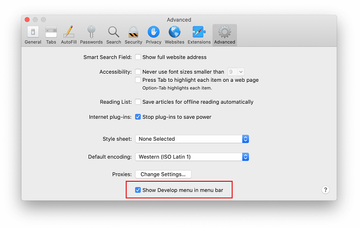
Now that the Develop entry has been added to the Safari menu, expand it and click on Empty Caches.
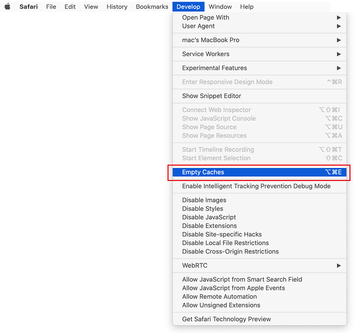
Now select History in the Safari menu and click on Clear History in the drop-down list.
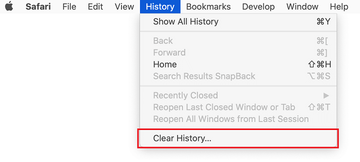
Safari will display a dialog asking you to specify the period of time this action will apply to. Select all history to ensure a maximum effect. Click on the Clear History button to confirm and exit.

Go back to the Safari Preferences and hit the Privacy tab at the top. Find the option that says Manage Website Data and click on it.

The browser will display a follow-up screen listing the websites that have stored data about your Internet activities. This dialog additionally includes a brief description of what the removal does: you may be logged out of some services and encounter other changes of website behavior after the procedure. If you’re okay with that, go ahead and click on the Remove All button.
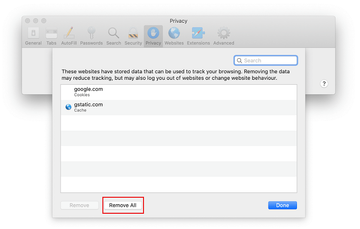
Restart Safari
- Remove f.txt.js in Google Chrome
Open Chrome, click the Customize and control Google Chrome (⁝) icon in the top right-hand part of the window, and select Settings in the drop-down
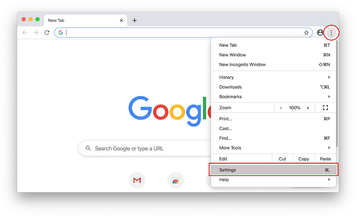
When on the Settings pane, select Advanced
Scroll down to the Reset settings section.
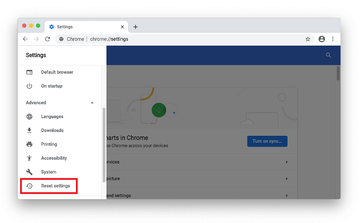
Confirm the Chrome reset on a dialog that will pop up. When the procedure is completed, relaunch the browser and check it for malware activity.
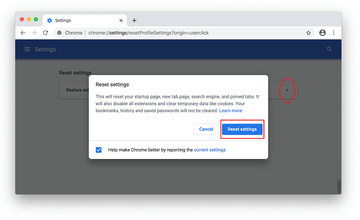
- Remove f.txt.js from Mozilla Firefox
Open Firefox and go to Help – Troubleshooting Information (or type about:support in the URL bar and press Enter).
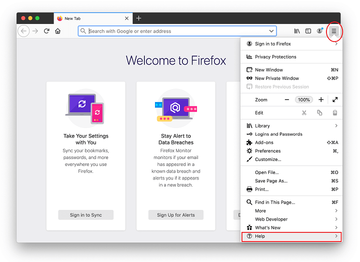

When on the Troubleshooting Information screen, click on the Refresh Firefox button.
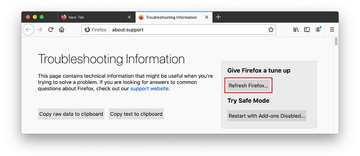
Confirm the intended changes and restart Firefox.
Get rid of f.txt.js virus on a Mac using Combo Cleaner removal tool
The Mac maintenance and security app called Combo Cleaner is a one-stop tool to detect and remove f.txt.js virus. This technique has substantial benefits over manual cleanup, because the utility gets hourly virus definition updates and can accurately spot even the newest Mac infections.
Furthermore, the automatic solution will find the core files of the malware deep down the system structure, which might otherwise be a challenge to locate. Here’s a walkthrough to sort out the f.txt.js issue using Combo Cleaner:
Download Combo Cleaner installer. When done, double-click the combocleaner.dmg file and follow the prompts to install the tool onto your Mac.
By downloading any applications recommended on this website you agree to our Terms and Conditions and Privacy Policy. The free scanner checks whether your Mac is infected. To get rid of malware, you need to purchase the Premium version of Combo Cleaner.
Open the app from your Launchpad and let it run an update of the malware signature database to make sure it can identify the latest threats.
Click the Start Combo Scan button to check your Mac for malicious activity as well as performance issues.
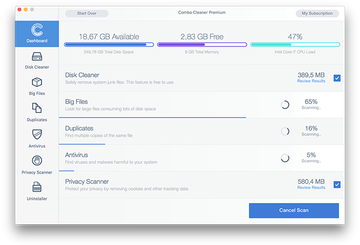
Examine the scan results. If the report says “No Threats”, then you are on the right track with the manual cleaning and can safely proceed to tidy up the web browser that may continue to act up due to the after-effects of the malware attack (see instructions above).
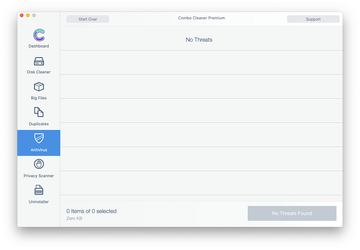
In case Combo Cleaner has detected malicious code, click the Remove Selected Items button and have the utility remove f.txt.js threat along with any other viruses, PUPs (potentially unwanted programs), or junk files that don’t belong on your Mac.
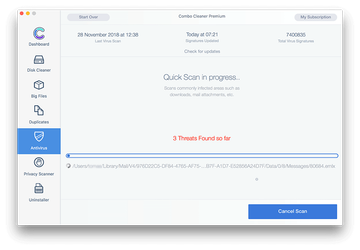
Once you have made doubly sure that the malicious app is uninstalled, the browser-level troubleshooting might still be on your to-do list. If your preferred browser is affected, resort to the previous section of this tutorial to revert to hassle-free web surfing.
